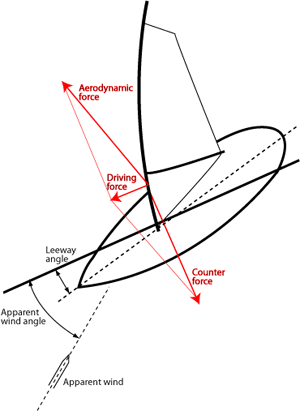 |
 |
 |
 |
||||||||
Dear Friends, Colleagues and Clients, As 2008 draws to a close, I would like to express my gratitude for the unique relationship I have developed with you. As such, I choose to share with you my experience and thoughts in overcoming adversity, hoping that it may be of service to you as you sail into the adverse economic wind in 2009. |
||
Sail Into The Wind |
||
by |
||
Xiaoping Li, President, The Ping Way Inc. |
||
Vancouver Airport, January 3, 1988. I clumsily walked down the aisle with a small suitcase, a hand bag and a plastic bag. Passengers in this Canadian plane, unlike the plane I had flown in from China, were mostly white. Above my seat, a coat lay across the storage cabin. I wasn’t sure if I could move it aside to cram my suitcase in. The coat was someone’s private property and I’d heard that westerners value privacy and their property. In the middle of my feeling embarrassed for taking more luggage than the other passengers, a steward came over. I couldn’t understand anything he said, but he made a lifting motion. I nodded. Swiftly, he shuffled the coat aside, lifted my suitcase, and pushed it in. A few smiling passengers watched this happen and the steward smiled back at them and spoke a little more. I only understood the ending phrase: “... show them how to travel.” I quickly thanked him, sat down and pondered my inferiority to the smiling Canadians around me. I was 24, a disadvantaged age according to conventional wisdom to master a new language. Nevertheless, I resolved to be an exception and began my journey to overcome adverse odds to master the English language. I took English classes, made English-speaking friends and even conversed with my fellow Chinese friends in English. I took acting and voice lessons and acted on stage and screen. I practiced writing and, through relentless effort, published articles in magazines and newspapers including The Globe And Mail. I wrote a book that received three publishers’ offers. I started my training company and have facilitated team building for thousands of professionals in English. I am recording a program with CBC Radio. Being an adult, I did not have certain advantages a child has in learning a language. For example, a child receives teachings from adults constantly and sh/e doesn’t need to devote at least half of their waking time to making a living. But I had the advantage of maturity and I was able to seek out learning opportunities in my every waking minute. In every disadvantaged situation, you can find an advantage. Even in the wind that blows against you, you can find a way to turn it into a force to propel you forward. I did just that in my recent windsurfing trip to Cuba. The techniques for sailing into the wind can be transferred into practices to overcome adversities.
Whatever adversity you may face in 2009, I believe, you can find a way to generate a counter force and a sideways aerodynamic force to help you sail into the wind of adversity. Yes, you can! I am available to support you, your family or your organization to identify the forces you need to sail into the adverse economic wind in 2009. To book me for a consultation, speech or workshop, please call 416-763-5347 or e-mail info@thepingway.com. Congratulations to Jean Zhou at IPE Logistics for winning the year-end prize draw of a free Emotional Intelligence Assessment (market value $495) provided by The Ping Way. Thanks to all of The Ping Way’s trainees for evaluating your training experience with us and for participating in this prize draw. On behalf of our team of facilitators, I wish you greater success in 2009! Please feel free to forward this e-newsletter to those who may benefit from reading its message |

Achieving Peak Performance for Life
416-763-5347
info@thepingway.com
3A Marilyn Ave., Toronto, Ontario, Canada M1S 1B9
Meeting of Minds is edited by Jim Gregory. To view all past issues, please click here. To ensure that Meeting of Minds will continue to reach you, please subscribe and add us to your safe senders list. Privacy Police: Your privacy is important to us. We will never sell or rent your email address and you can |
Copyright © 2008 The Ping Way Inc. All right reserved. No. 11, Volume 1
